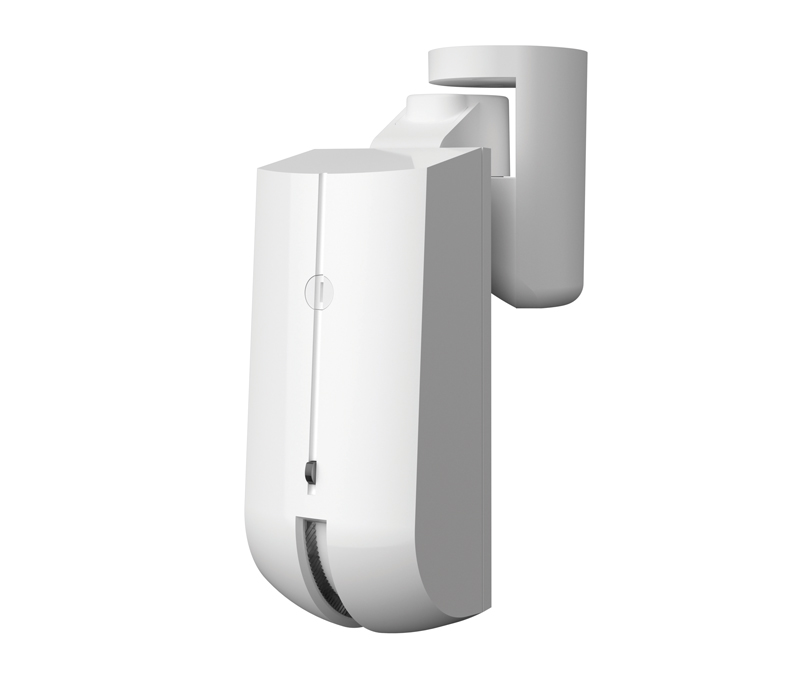 The Satel Agate unit is an externally rated (IP54) “curtain” format intrusion detector designed for perimeter protection. It utilises two sensors, passive infrared and microwave, and meets the requirements of Grade 3 when wall mounted indoors.
The Satel Agate unit is an externally rated (IP54) “curtain” format intrusion detector designed for perimeter protection. It utilises two sensors, passive infrared and microwave, and meets the requirements of Grade 3 when wall mounted indoors.
Getting started
The connections are all positioned at the top of the circuit board. With the first two for Tamper (N/C) contacts, then remote LED control input, +12v power in, Common, Alarm Output (N/C) pair and Anti-Masking output (N/C) pair. These nine screw terminals are around 2.7mm wide so a standard terminal driver will not fit. While the unit is very well built and of compact size, there is very limited space for cable dressing within the case. Two plastic clips hold the pcb into the case back and allow it to be removed for fixing. A close-fitting seal around the case is continued around the mounting holes to help seal the fixing points.
The unit is powered from a 12v DC source ±15% and has a maximum current demand of 25mA (21mA quiescent). The microwave frequency is stated as 24.125GHz.
At power-up a tricolour LED flashes red, green and blue alternately for around 45 seconds as the device configures itself.
The device has a recommended installation height of 2.4 metres and is given a maximum range of 14 metres. When used outdoors it is advised to provide shelter from extreme weather and that the optical anti-masking should not be used as this can be triggered by poor visibility conditions. A right-angle bracket is supplied for side mounting, however, this would not be Grade 3 compliant.
Settings
To enter its walk-test mode, you must power the device up with the LED link in place and then remove the link during the 45 second “warm up” time. This puts the unit into Microwave test mode. The LED then flashes Green after the warmup time and can be walk tested for range and positioning. Alternatively removing the link and then adding it during the warmup time will enter the unit into its PIR test mode. This is indicated by the LED flashing Blue every 3 seconds.
The LED will then flash every 3 seconds to show which device is being tested, either green for the microwave or Blue for the PIR. The alarm output will be activated by the single sensor during this test mode. The device sensitivity is set using the two potentiometers, clockwise to increase. Normal operation is restored after a power cycle, or the test mode will time-out after around 20 minutes.
Following the testing and re-fitting of the cover, a power-cycle should be performed to restore normal operation and re-configure the anti-mask detection system.
The anti-mask delay time is a little more involved in that the 1-second default to approximately 60 seconds maximum is set by the relationship of the sensitivity potentiometers, these are set to opposite extremes at power-up with the LED link in place for 60 seconds and absent for the 1 second default. The manual suggests that the value can be increased from 1 second but a range of tests only resulted in either 1 or 60 being achieved.
Read the full review in the August 2021 edition of PSI magazine in print and digital
Note: After revisiting the test, the anti-masking problem mentioned in the full review was not repeated and as a result was put down to an anomaly at the time of testing. This meant that the final score for the unit could be upgraded to 8.5/10

